Main content starts here.
Foreign Languages > Chiba International Information Square - To foreign residents - > Chiba Nanohana News > Chiba Nanohana News (Past Issues) > Chiba Nanohana News (March 2024)
Chiba Nanohana News (March 2024)
Index
I. Festivals and Events
Cherry Blossom Viewing Spots in Chiba
Hanami” (cherry blossom viewing) is a popular traditional spring activity in Japan with a long history. Cherry blossoms are called “sakura” in Japanese and are by far the most anticipated flower every spring. When they are in bloom, people gather to take walks or have picnics under the trees, enjoying the brief one to two-week period in a year that these beautiful blossoms can be admired.
*Event periods may change depending on the flowering period.
1. 23rd Chiba Castle Sakura Matsuri @ Inohana Park, Chiba City
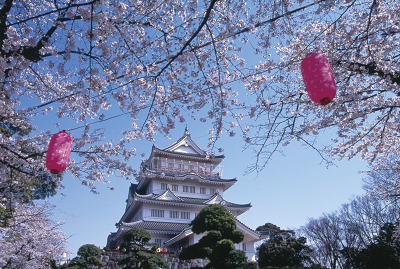
Around 90 Somei Yoshinos and Inohana Castle, also known as Chiba Castle, are the main attractions in this festive scene in Inohana Park. Don’t forget the cherry blossom trees behind Chiba Castle! A tea house, Inohana-tei, sits in a corner of the park, serving refreshments to visitors as they look over a beautiful Japanese garden after enjoying the cherry blossoms.
Chiba Castle will be illuminated during the period of the festival accompanied by food and beverage stalls and live local cultural performances.
- Period: March 23 (Saturday) - 31 (Sunday), 11:00-20:00
- Location: 1-6 Inohana, Chuo-ku, Chiba City
- Access: Walk 10 mins from Kencho-mae station (Chiba Monorail) or walk 15 mins from Hon-Chiba station (JR Sotobo line or Uchibo line)
- Inquiry: Office of the Organizing Committee of the Chiba Castle Sakura Matsuri TEL:043-307-5003
2. Sakura Matsuri @ Shimizu Park, Noda City
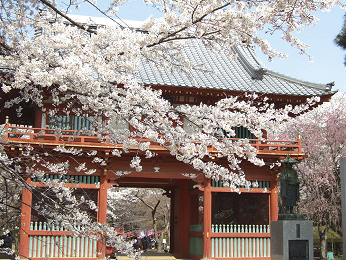
Around 2,000 cherry blossom trees of 50 varieties, including the Somei Yoshino variety, take stage in the bustling park. During the festival period, there will be stalls and the cherry blossoms will be illuminated at night.
- Period: March 16 (Saturday) - April 7 (Sunday)
- Location: 906 Shimizu, Noda City
- Access: Walk approximately 10 minutes from Shimizu Koen station (Tobu Urban Park line)
- Inquiry: Shimizu Park Management Office TEL:04-7125-3030
3. Sakura Castle Park, Sakura City
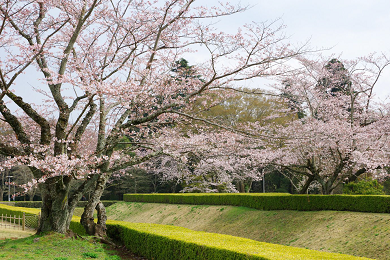
Sakura Castle Park is the only castle in Chiba prefecture that is listed as one of “Japan’s Top 100 Castle” and is a designated national heritage cultural property under the “Edo Travelogue through Four Hokuso Cities”. The park is home to around 1,100 cherry blossom trees of around 50 varieties, including the 13 varieties that have been famous since the Edo era. The cherry blossom trees, tucked into the ruins of the keep and dry moat, and reflected on the surface of the water around the fort, with the Japanese castle make for a beautiful picture.
- Best period: late March - early April
- Location: Jonaicho, Sakura City
- Access: Walk 20 minutes from Sakura station (JR Sobu Main line) or Sakura station (Keisei Main line)
- Inquiry: Sakura City Parks and Greenery Division TEL: 043-484-6165
4. Suigo Omigawa Sakura Tsutsuji Matsuri @ Omigawa Joyama Park, Katori City
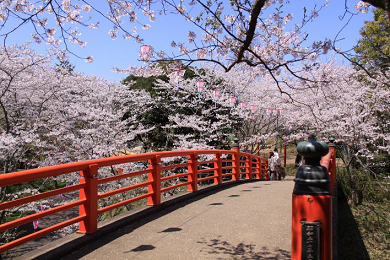
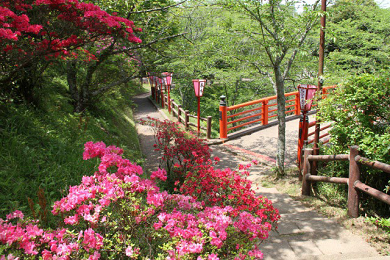
Known for being one of the best cherry blossom spots in the north of the Boso peninsula, Omigawa Joyama Park is transformed into shades of pink by around 1,000 cherry blossom trees, including Somei Yoshino trees. Lanterns gently illuminate the cherry blossoms around the visitor center and the red bridge at night. A hanami concert and yosakoi performance are scheduled for March 31 (Sunday).
Cherry blossoms flower from early April and azaleas from early May according to past data.
- Period: March 19 (Tuesday) - May 5 (Sunday, public holiday)
- Location: 4780-1 Omigawa, Katori City
- Access: Walk around 20 minutes from Omigawa station (JR Narita line)
- Inquiry: Suigo Omigawa Tourism Association TEL: 0478-50-1212
5. Mobara Sakura Matsuri @ Mobara Park, Mobara City
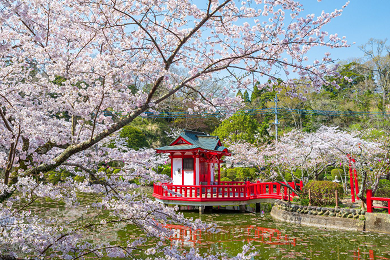
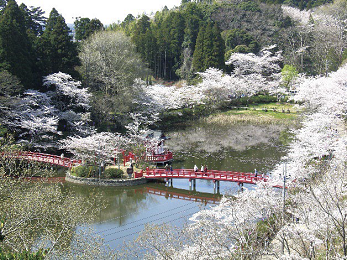
More than 2000 cherry blossom trees, including Somei Yoshino cherry blossom trees, bloom in Mobara Park, one of Japan’s 100 best cherry blossom spots.
During the Mobara Sakura Matsuri, the streets of Mobara are blanketed by pastel pink. Take a stroll along the marvelously illuminated cherry blossoms down the Toyoda riverbank and Mobara Park!
- Period: March 18 (Monday) - April 7 (Sunday)
(Event: March 30, Saturday and 31, Sunday, 10:00 - 15:00) - Location: 1325-1 Takashi, Mobara City
- Access: Take the bus bound for Chonan from Mobara station (JR Sotobo line), alight at “Sogenji” and walk for around 5 minutes
- Inquiry: Mobara City Tourism Association TEL: 0475-36-7595
6. Togane Sakura Matsuri @ Hakkaku Lake, Togane City
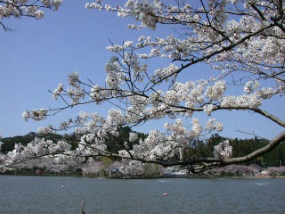
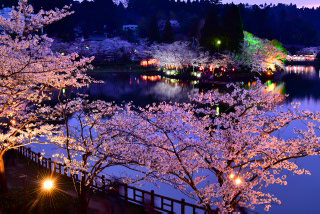
Around 300 Somei Yoshino trees line the entire 800-meter perimeter of Hakkaku Lake. Visitors will be welcomed by kitchen cars, boat tours of Hakkaku Lake, tea ceremony, stage performances, as well as illuminated cherry blossoms at night.
- Period: March 27 (Wednesday) - April 7 (Sunday)
- Location: Hakkaku Lake, 1435-1 Togane, Togane City
- Access: Walk around 8 minutes from Togane station (JR Togane line)
- Inquiry: Togane City Tourism Association TEL: 0475-50-1142
7. Odayama Park, Kisarazu City
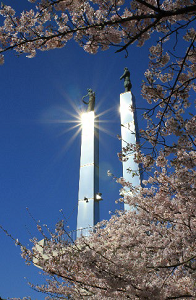
Known as the Forest of Love (Koi no Mori) from the legends of Yamato Takeru, the summit of Odayama Park is dyed in the delicate pink of cherry blossoms. The trees will also be lit up at night from late March to early April. Kisarazu Tower on the summit offers panoramic views, from the birds-eye of the Tokyo Bay Aqualine and sweeping night view of Kisarazu City, to the Yokohama night skyline on the other side of Tokyo Bay. On clear days. Tokyo Sky Tree is also visible from this spot.
- Best period: late March - early April
- Location: 2-16 Oda, Kisarazu City
- Access: Take the bus from the east exit of Kisarazu station (JR Uchibo line) for around 4 minutes, alight at “Koi no Mori” and walk 5 minutes
- Inquiry: Kisarazu City Tourist Information Center TEL: 0438-22-7711
